 |
 |
 |
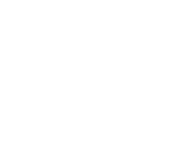
|
Pen wiper, about 1902–1906. Tiffany Studios. Favrile glass tesserae, bronze. H. 5.7 cm, Diam. 6.8 cm. The Corning Museum of Glass, Corning, New York (2015.4.8).
|
|
 |
ARCHITECTURAL PANELS, DECORATIVE OBJECTS, AND DIGITAL DISPLAYS REVEAL THIS LITTLE-KNOWN ASPECT OF TIFFANY’S ARTISTRY AND INNOVATION
-Tiffany’s Glass Mosaics
20/5/2017-7/1/2018
The first exhibition to explore Louis C. Tiffany’s glass mosaics—an extraordinary but little-known aspect of his artistic production—will be presented by The Corning Museum of Glass (CMoG) from May 20, 2017, through January 7, 2018.
|

|
Posted 16 November 2016
|
Share this:
|
|
The Corning Museum of Glass to Present First Major Exhibition Dedicated to Tiffany's Glass Mosaics Architectural Panels, Decorative Objects, and Glass Fragments Reveal This Little-Known Aspect of Tiffany’s Artistry and Innovation
New High-Resolution Photography and Digital Displays Provide Visitors with Unprecedented Opportunity to Study Details of Extant Works from Around the Country
The first exhibition to explore Louis C. Tiffany’s glass mosaics—an extraordinary, but little-known aspect of his artistic production—will be presented by The Corning Museum of Glass (CMoG) from May 20, 2017 through January 7, 2018. Tiffany’s Glass Mosaics, organized jointly by CMoG and The Neustadt Collection of Tiffany Glass, will combine works from both collections with important loans and specially designed digital displays to reveal how Tiffany’s mosaics reflected his studio’s artistry and innovation.
This is the first time that a broad range of Tiffany’s mosaics and prepatory materials have been displayed together. The exhibition will feature nearly 50 works dating from the 1890s to the 1920s, from intimately-scaled, mosaic fancy goods designed for use in the home to large-scale, mosaic panels and architectural elements composed of thousands of individual pieces of glass, in addition to over 1000 pieces of extant Tiffany glass from The Neustadt's glass archive. Architectural mosaics still in situ will be presented in a specially-created “Mosaic Theater,” in which multiple high-definition monitors will showcase CMoG’s new photography of these works.
“We are thrilled to partner with The Neustadt Collection of Tiffany Glass on this groundbreaking exhibition. Thanks to the expertise of both of our teams, this important aspect of Tiffany’s work is finally able to be explored in a meaningful way,” said Karol Wight, president and executive director of CMoG. “The history of glass mosaics extends back more than 3,000 years, and the permanent collection at CMoG is the perfect backdrop for contextualizing the work undertaken by Tiffany’s firm, which popularized this technique in the United States.”
|
|
|
|
|
|
|
Visitors will have a chance to explore the process behind the creation of Tiffany’s mosaics—from the beginning when detailed watercolor studies were presented to the client and the creation of small sample panels used to guide glass selection for specific commissions. CMoG will bring to life the atmosphere of Tiffany’s workrooms with large-scale murals of historic photos and a rich display of extant Tiffany glass drawn from The Neustadt’s collection. The exhibition will include racks of Tiffany’s sheet glass and a worktable measuring measuring 16’ x 4’ that features remarkable examples of glass in an extraordinary array of color combinations, textures, patterns and translucencies, along with a selection of glass “jewels,” all used in Tiffany’s mosaics. Four different zones on the worktable delve into the innovative glass production undertaken at Tiffany’s furnaces to create bespoke glass for mosaic compositions. Through interactive digital monitors and videos, visitors can explore the variety of glass used to create two of Tiffany’s major commissions, The Dream Garden (The Curtis Center & Dream Garden, Philadelphia) and Jacques Marquette’s Expedition (Marquette Building, Chicago). This unique display will underscore the complexity and masterful execution of Tiffany’s mosaics.
“Although Louis C. Tiffany is best known for his pioneering leaded glass windows and lamps, his mosaics are the culmination of his experimentation and artistry in glass,” said Lindsy Parrott, director and curator at The Neustadt and co-curator of Tiffany’s Glass Mosaics. “Indeed, the mosaics represent an exciting synthesis of his work in both leaded and blown glass. Using a rich variety of materials, including multicolored opalescent glass and shimmering iridescent glass, accented with three-dimensional glass ‘jewels,’ Tiffany established a bold new aesthetic for mosaics and contributed a uniquely American character to the centuries-old art form.”
|
|
|
|

Mural, The Dream Garden, 1916. Tiffany Studios. Glass mosaic. Curtis Publishing Company Building, Philadelphia, Pennsylvania.
|
|
|
|
|

|

|

|
The exhibition will also highlight the role of Tiffany’s turn-of-the-20th-century showrooms, where he presented the finest examples of the company's completed work for clients and the public. Walking into the exhibition, visitors will see one of the grand mosaic columns made for the company’s showrooms in New York City, as well as luxurious, mosaic fancy goods, lamps, and decorative panels that originally adorned the opulent private residences built by American financiers and industrialists.
“Tiffany’s successful combination of art and business coincided with the rapid development of consumer culture in the United States,” said Kelly Conway, curator of American glass at CMoG and co-curator of Tiffany’s Glass Mosaics. “His impressive New York City showrooms and clever, gorgeous displays of the company’s mosaics at world’s fairs, coupled with strategic marketing, sparked consumer interest and drove demand for glass mosaic luxury objects.”
Because many of Tiffany’s most important mosaics are still installed in their original settings, CMoG’s photography team visited 12 locations in New York State, Philadelphia, Baltimore, and Chicago, to capture detailed shots of these artworks. This exciting new photography will be presented in an immersive “Mosaic Theater,” a gallery in the exhibition that will use high-definition monitors to transport visitors to the various mosaic sites. They will be able to experience these mosaics up close and at eye level, in their original architectural settings, and in stunning detail, providing the opportunity for heightened appreciation of the design, glass selection, and craftsmanship.
Artworks have been generously loaned by private collectors and the Chrysler Museum of Art, Haworth Art Gallery, Kalamazoo Institute of Arts, Metropolitan Museum of Art, Charles Hosmer Morse Museum of American Art, Museum of Modern Art, Rockwell Museum, and Virginia Museum of Fine Arts.
Demonstrations and Activities
|
|
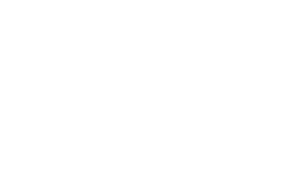
Detail of reredos with cross, after 1910. Tiffany Studios. Glass mosaic with glass jewels. Christ Episcopal Church, Corning, New York.
The Corning Museum of Glass to Present First Major Exhibition Dedicated to Tiffany's Glass Mosaics
|
|
|
|
|

|

|

|
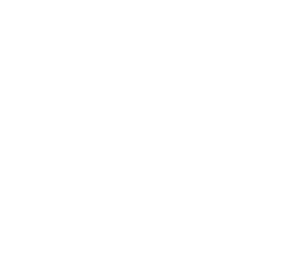
Mosaic panel with peonies, about 1900–1910. Tiffany Glass and Decorating Company or Tiffany Studios. Inlaid iridized glass, bronze. H. 34.5 cm; W. 39 cm; Diam. 2 cm. The Corning Museum of Glass, Corning, New York (77.4.91).
|
|
“Although Louis C. Tiffany is best known for his pioneering leaded glass windows and lamps, his mosaics are the culmination of his experimentation and artistry in glass,” said Lindsy Parrott, director and curator at The Neustadt and co-curator of Tiffany’s Glass Mosaics. “Indeed, the mosaics represent an exciting synthesis of his work in both leaded and blown glass. Using a rich variety of materials, including multicolored opalescent glass and shimmering iridescent glass, accented with three-dimensional glass ‘jewels,’ Tiffany’s innovations in glass established a bold new aesthetic for mosaics and contributed a uniquely American character to the centuries-old art form.”
|
|
|
|
|

|

|

|
The exhibition will also highlight the role of Tiffany’s turn-of-the-20th-century showroom, where he presented the finest examples of his completed work for his clients and the public. Photographs of the various workrooms were part of Tiffany’s marketing efforts and were used in both his advertisements as well as his marketing brochures. These “behind-the-scenes” photos emphasized that each object made at the Tiffany Studios was handcrafted, as opposed to mass produced.
“Tiffany’s successful combination of art and business coincided with the rapid development of consumer culture in the United States,” said Kelly Conway, curator of American glass at CMoG and co-curator of Tiffany’s Glass Mosaics. “His impressive New York City showroom and clever, gorgeous displays of the company’s mosaics at world’s fairs, coupled with strategic marketing, sparked consumer interest and drove demand for high-priced luxury objects for the home.”
|
|
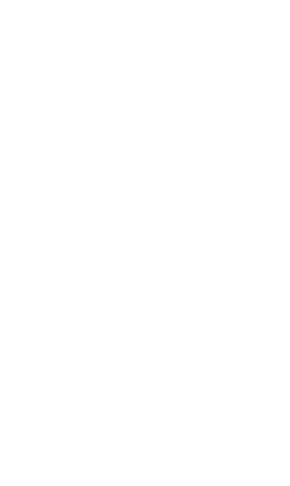
Panel, Fathers of the Church, about 1892. Tiffany Glass and Decorating Company, designed by Joseph Lauber (American, b. Germany, 1855–1948). Glass and plaster. H. 248.3 cm, W. 148.6 cm. The Neustadt Collection of Tiffany Glass, Queens, New York.
|
|
|
|
|
|
|
Accompanying the exhibition will be hot glass demonstrations that focus on the creation of patterns and textures used in Tiffany’s mosaic designs. “With the curators, Kelly Conway and Lindsy Parrott, we studied some of the glass in The Neustadt’s glass archive and determined that the surface finishes and color patterns, which we thought were created through rolled or flat glass techniques could, in fact, only be created on a blown vessel form,” said Eric Meek, senior manager of Hot Glass Programs at CMoG. “Scholars who study this material didn’t realize exactly how it was made. It was a fun process of discovery for us all and the kind of collaboration that we love to support at CMoG.”
Visitors will be able to watch the Hot Glass Demo Team make patterned glass like Tiffany might have requested for a mosaic commission. The team will blow cylindrical vessels, flatten them, and then cut out specific sections. A display in the Amphitheater Hot Shop will tell the story of the process used to make the murrine flowers for The Dream Garden mosaic. Murrine refers to patterns or images made in glass cane that are revealed when cut into cross-sections.
In the exhibition, visitors can select portions of a mosaic at an easel—just like glass selectors at Tiffany’s studios, or they can visit the Make Your Own Glass studio to create a mosaic to take home. Visitors will be able to piece together their choice of iridescent, translucent, or opaque glass to create a Tiffany-inspired butterfly mosaic, which The Studio will then fuse together. (Additional fee).
Classes at The Studio and the Annual Seminar on Glass at CMoG in the fall 2017 will also focus on Tiffany’s glass mosaics.

|

|

|

|

|
|
|
Detail of St. Andrew from three versions of The Last Supper reredos, Tiffany Glass and Decorating Company, designed by Frederick Wilson (British, b. Ireland, 1858–1932). Glass mosaic. Left to Right: First Independent Church of Baltimore (now First Unitarian Church), Baltimore, Maryland, 1897;
|
|
|
|
|
“Dragonfly” reading lamp, about 1905. Tiffany Studios, designed attributed to Clara Pierce Wolcott Driscoll (American, 1861–1944). Leaded glass, metal filigree; bronze, glass mosaic. H. 48.3 cm; Diam. 35.6 cm. The Neustadt Collection of Tiffany Glass, Queens, New York (N.86.GL.3a-c).
|
|
|
|
|
Panel, The Prayer of the Christian Soldier, 1919. Tiffany Studios, designed by Frederick Wilson (British, b. Ireland, 1858–1932). Glass mosaic. First Presbyterian Church (now United Presbyterian Church), Binghamton, New York.
|
|
|
|

|

|

|
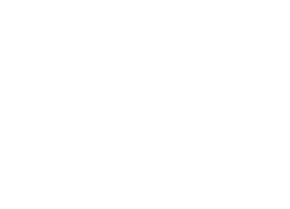
Reredos, 1891. Tiffany Glass Company or Tiffany Glass and Decorating Company, designed by Jacob Adolphus Holzer (American, b. Switzerland, 1858–1938). Glass mosaic with glass jewels; marble mosaic. St. Paul’s Episcopal Church, Troy, New York.
|
|
Publication
Tiffany’s Glass Mosaics will be accompanied by a new publication presenting the most comprehensive documentation and analysis of Tiffany’s glass mosaics to date. The volume advances scholarship in the field, and offers new perspectives for readers at all levels of expertise. Authors include the co-curators Conway and Parrott; Elizabeth J. De Rosa, independent curator; Natalie Z. Peters, independent art historian; Jennifer Perry Thalheimer, curator and collection manager, Charles Hosmer Morse Museum of American Art; and Karol B. Wight, president and executive director, CMoG. The appendix was meticulously researched and compiled by Morgan T. Albahary, curatorial and collection assistant, The Neustadt.
The landmark book is richly illustrated with new photography of Tiffany’s most celebrated mosaic commissions, including The Dream Garden in the Curtis Center in Philadelphia and Jacques Marquette’s Expedition in Chicago’s Marquette Building. Double page spreads show extant mosaics in situ and allow readers to see vivid details of the works for the first time. The publication also includes important archival material and contextual photographs from major museums, libraries, and private collections in the United States and Europe. A comprehensive appendix of all of Tiffany’s known public, ecclesiastical, and residential mosaic commissions serves as both a reference for researchers and a guide for anyone interested in visiting extant Tiffany mosaics.
|
|
|

|

|

|

|

|
|
|
Book Tiffany's Glass Mosaics
|
|
|
|
|
Blown and cut glass murrine and Detail of The Dream Garden
|
|
|
|
|
“Streaky” sheet glass, Tiffany Furnaces, Corona, New York. The Neustadt Collection of Tiffany Glass, Queens, New York. Detail of frieze, Jacques Marquette’s Expedition, 1895. Tiffany Glass and Decorating Company, designed by Jacob Adolphus Holzer (American, b. Switzerland, 1858–1938). Glass mosaic. Marquette Building, Chicago, Illinois
|
|
|
|

|

|

|
About The Neustadt
Dedicated to preservation, scholarship, education, and connoisseurship, The Neustadt Collection of Tiffany Glass provides an in-depth look at the artistry of Tiffany Studios and its contribution to a uniquely American chapter in the history of stained glass. The organization is committed to sharing this story and its collections with diverse audiences through its gallery at the Queens Museum in New York City and exhibitions that travel to museums nationwide. The Neustadt holds a premier collection of Louis C. Tiffany’s celebrated lamps, windows, metalwork, and rare archival materials, including more than a quarter of a million pieces of original Tiffany flat glass and glass “jewels” used to create his iconic designs.
About The Corning Museum of Glass
The Corning Museum of Glass is the foremost authority on the art, history, science, and design of glass. It is home to the world’s most important collection of glass, including the finest examples of glassmaking spanning 3,500 years. Live glassblowing demonstrations (offered at the Museum, on the road, and at sea) bring the material to life. Daily Make Your Own Glass experiences at the Museum enable visitors to create work in a state-of-the-art glassmaking studio. The campus in Corning includes a year-round glassmaking school—The Studio—and the Rakow Research Library, with the world’s preeminent collection of materials on the art and history of glass. Located in the heart of the Finger Lakes Wine Country of New York State, the Museum is open daily, year-round. Children and teens, 17 and under, receive free admission.
See the Agenda>
THE CORNING MUSEUM OF GLASS
One Museum Way
Corning, NY 14830
+1 (800) 732-6845
www.cmog.org
|
|
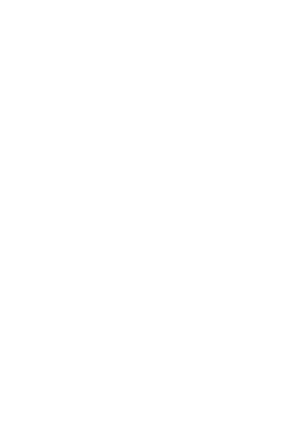
Variety of iridescent glass used for mosaics, Tiffany Furnaces, Corona, New York. The Neustadt Collection of Tiffany Glass, Queens, New York.
|
|
|
|
|
|
|
|
|
|


